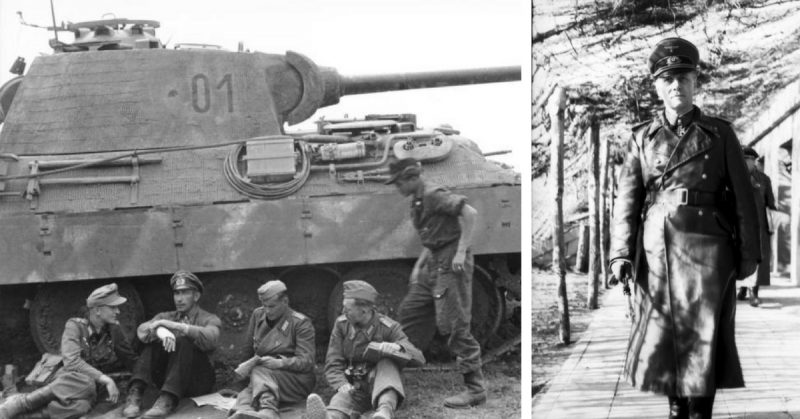Modern warfare distances commanders from the action. The commanders of WWII in German armies, however, often put themselves close to the front lines. Along with the example, they set for their troops, it provided an opportunity for the macho posturing associated with Nazism. As a result, many were injured in action.
Friedrich August Freiherr von der Heydte
Heydte was a senior and respected paratroop commander. Anybody serving as a paratrooper was putting themselves in harm’s way; Heydte had the scars to prove it.
In fighting near the Neva river in Russia, Heydte was hit by a piece of shrapnel. Another fragment of metal killed the medical officer who was treating him.
While serving in Italy, he was involved in a plane crash while reconnoitering the island of Elba and was hospitalized again.
In his last military action, Heydte led a paratroop expedition during the Battle of the Bulge. On landing, he broke his arm. He tried to rally his scattered troops in desperate circumstances before he was captured and became a prisoner of war.
Willi Langkeit
A renowned Panzer commander, Langkeit led the 14th Panzer Division in fighting around Stalingrad. There, his diminished unit repeatedly repelled Russian attacks.
Seriously injured on January 13, 1943, he was flown out of the Stalingrad pocket. It saved him, but the Soviets destroyed his unit in the following weeks. Undeterred, Langkeit took command of the replacement 14th Division and returned with them to the Eastern Front.
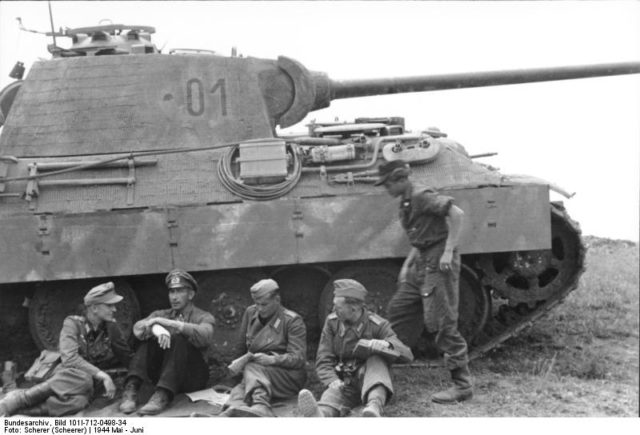
Erwin Rommel
Field Marshal Rommel was famously injured when Allied fighter-bombers attacked his car during the battle for Normandy in 1944. The attack left him hospitalized, where he committed suicide after being implicated in a plot to kill Hitler.
It was not the first time Rommel had been injured in action. From the moment he took charge of a panzer unit in 1940, he led from the front. Riding at the head of columns, personally directing guns, and wading into a river to build pontoons under fire, he consistently put himself at risk to be a better commander.
Almost inevitably, it led to an injury. Rommel’s tank was hit and crippled during an advance at the Maas on May 13. Unperturbed, Rommel remained with his unit, still leading from the front, still bringing them success.
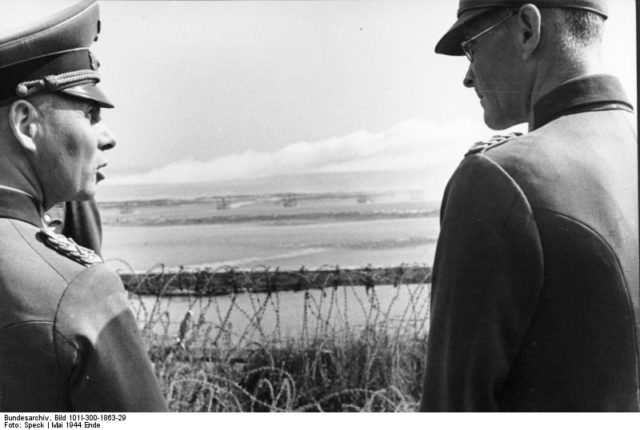
Walther Model
As the general commanding the 9th Army on the Russian front, Model was responsible for an enormous number of men fighting in difficult situations. He neither neglected his troops nor avoided the arduous circumstances they faced. As well as making his presence felt near the front lines, he argued with Hitler for the freedom he needed to fight the war.
In the spring of 1942, having destroyed Russian forces around Byeloi, Model faced a new problem. Escaped Russian soldiers and partisans were hiding in the woods behind German lines. He directed the operations to hunt them down, flying over the combat zone in an unarmoured plane. On one occasion, a bullet fired from the ground pierced the aircraft and traveled through Model’s body from his leg to his shoulder. After the pilot had landed the damaged plane, the injured general was taken to hospital for a blood transfusion.
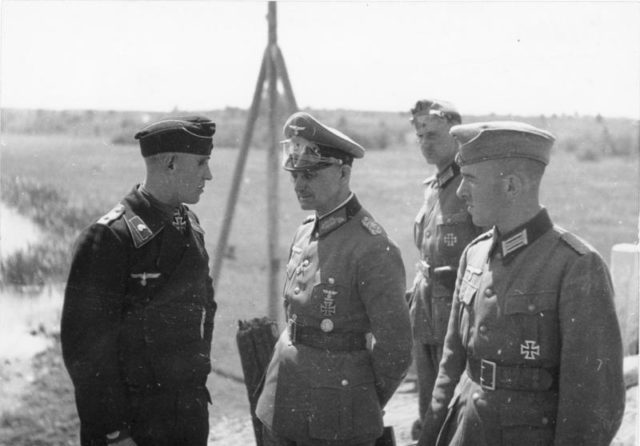
Walther K. Nehring
Like Rommel, with whom he served in Africa, Nehring was a tank commander who was willing to risk himself for victory. He was injured in action at least five times, including during Operation Citadel, Germany’s last great attempt to break the Russians.
Nehring’s most severe injuries were received during the Battle of Alam Halfa in North Africa. There, he was hit during a British bomber raid. Injured in the arm, body, and head, he was rushed back from the lines for treatment, and from there to Germany. When his arm did not respond to treatment, he signed himself as fit for duty anyway and returned to the action.
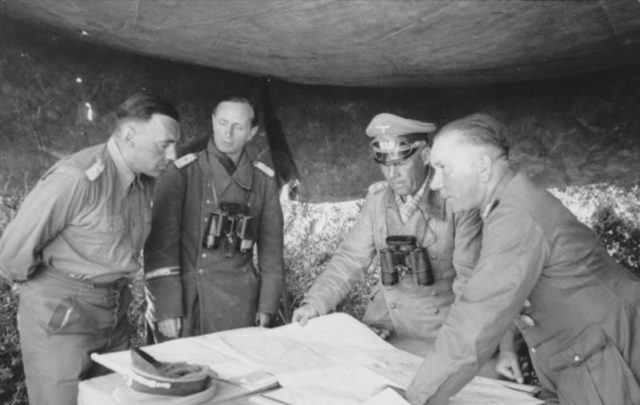
Hyanzinth von Strachwitz
As the commander of a tank battalion in the 18th Panzer Division, Strachwitz made a name for himself through daring action on the Russian front.
During one early mission, his unit’s vehicles were swarmed by Soviet infantry, and one tank was disabled. Grabbing a machine pistol and hand grenades, Strachwitz leaped from his own tank to defend the damaged tank and its crew. While attacking the Russians, he was hit by a bullet, which lodged in his body. He had it cut out there and then before returning to the fight, having decided that the injury was neither dangerous nor painful.
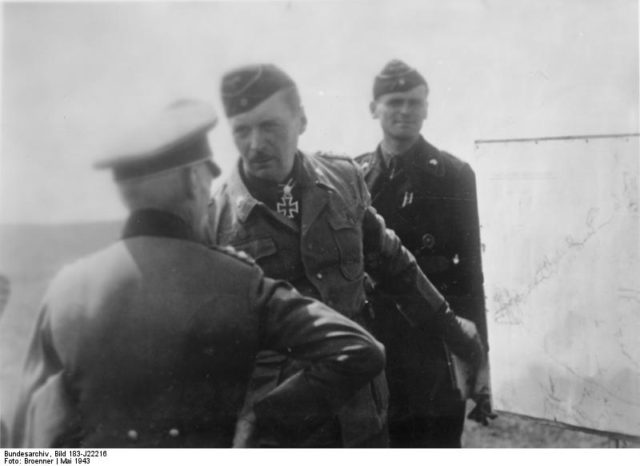
Student
A detailed and methodical planner, General Student was responsible for planning airborne assaults in Belgium and Holland during the offensives of 1940. The plan involved both paratroopers and gliders, which could more accurately be landed near their targets.
Although he could have overseen the operation from far behind the lines, Student was determined to be with his men in the field. He joined them, flying to the Hague.
On the last day of fighting for Rotterdam, he went to a window to see the source of gunfire. There, a bullet hit him in the head. His injury took him out of action for months and left him with a permanent speech impairment.
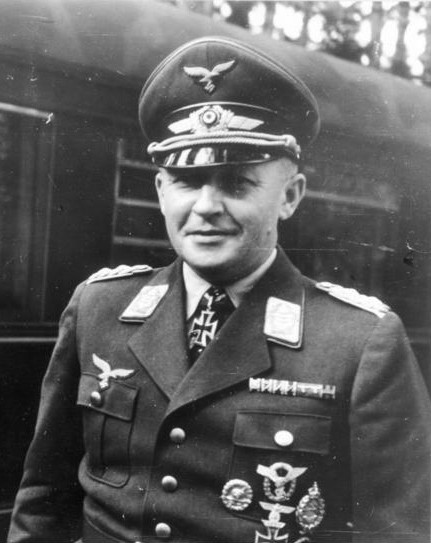
Otto Weidinger
As an SS company commander, Weidinger believed in leading from the front. During the invasion of Russia in the summer of 1941, he led his company in a bayonet charge. Injured in the fighting, he refused to leave his men until they had taken their objective.
He was again wounded in action following the failed Kursk offensive. There, he concentrated his forces against a Soviet counter-attack, led by example, and held the enemy off for six days. After the Soviets had broken through again, he created a new battlegroup from the remains of the German troops and retook lost ground. For his injuries in the fighting, he earned the Wound Badge in Silver.
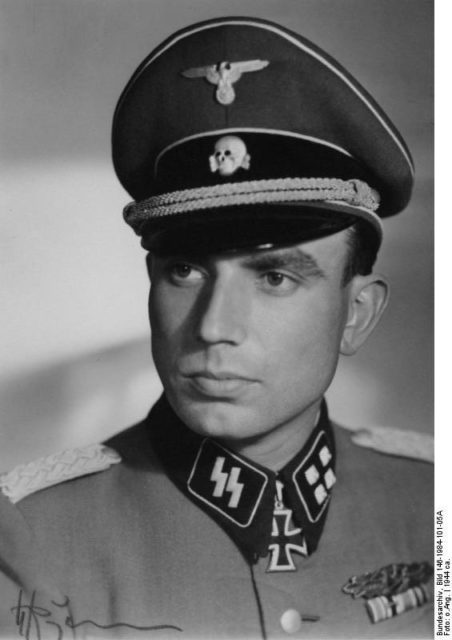
Source:
James Lucas (1996), Hitler’s Enforcers: Leaders of the German War Machine 1939-1945
